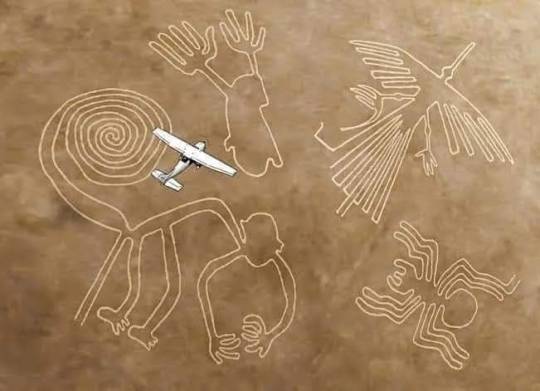#nazca lines
Photo


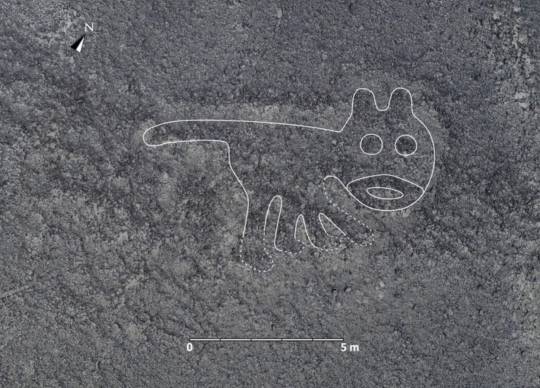
Archaeologists Uncover Nearly 170 Nazca Lines Dating Back About 2,000 Years in Peru
6K notes
·
View notes
Text
THESE ARE THE NAZCA LINES! (specifically the condor)

THIS IS A TEXTURE FROM GLYPHIC CANYON FROM SHADOW THE HEDGEHOG (2005)!

THIS IS GERALD HAWKINS AND MARIA REICHE! TWO OF THE MOST INFLUENTIAL RESEARCHERS OF THE NAZCA LINES!


THIS IS A TRACK IN THE SHADOW THE HEDGEHOG (2005) SOUNDTRACK! (VAST NAZCA)

IT PLAYS IN THE CUTSCENE BEFORE GLYPHIC CANYON!
do with this information what you will.
#im crazy.#shadow the hedgehog 2005#shadow the hedgehog#black doom#gerald robotnik#maria robotnik#nazca#nazca lines#sonic#sonic the hedgehog
68 notes
·
View notes
Text
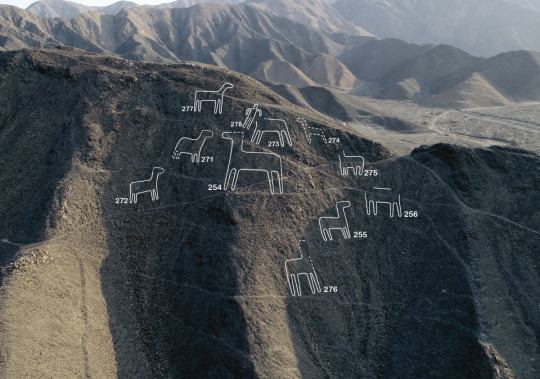
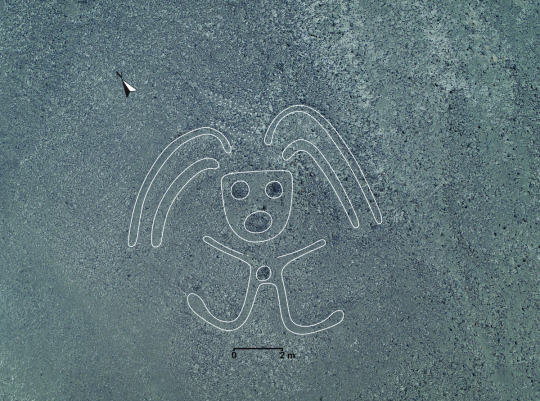
Archaeologists discovered 168 geoglyphs near the arid Nazca plain in Southern Peru. The new findings, which encompass images of humans, birds, snakes, cats, and killer whales, date between 100 BCE and 300 CE, when the pre-Incan Nazca civilization lived in the region. The discovery adds to nearly 1,000 straight lines and hundreds of figurative drawings that have so far been identified as part of the vast Nazca lines.
Professor Masato Sakai of Yamagata University in Japan and Peruvian archaeologist Jorge Olano led the recent survey. The team used aerial photographs, some captured by drones, to decipher the figures. Most of the newly discovered figures are relatively small — less than 32 feet wide — and many were drawn on hillsides.
Elaine Velie reports.
858 notes
·
View notes
Text

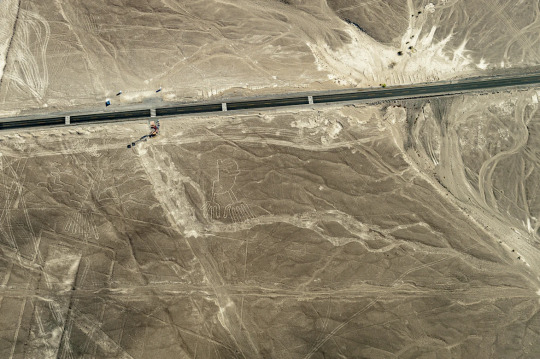

Nazca Lines, Peru
Alexander Schimmeck
#Nazca Lines#Peru#South America#Road#Highway#FromAbove#From Above#Archaeological Site#Desert#PeruNature
62 notes
·
View notes
Text

#funny#funny memes#memes#meme#funny meme#dank memes#dank#surreal#crop circles#nazca lines#ancient aliens
44 notes
·
View notes
Photo

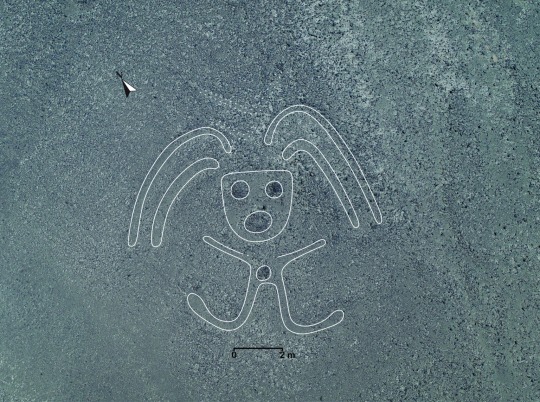
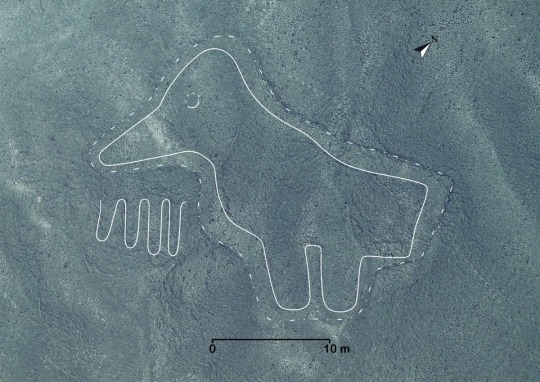
168 New Geoglyphs Discovered in Peru !
Archaeologists discovered 168 geoglyphs near the arid Nazca plain in Southern Peru. The new findings, which encompass images of humans, birds, snakes, cats, and killer whales, date between 100 BCE and 300 CE, when the pre-Incan Nazca civilization lived in the region. The discovery adds to nearly 1,000 straight lines and hundreds of figurative drawings that have so far been identified as part of the vast Nazca lines.
The Nazca people created the works by removing the earth’s top layer of black stone to reveal the white sand below, and although the exact function of the lines is unknown, they are thought to have served a ritualistic purpose in relation to astrology.
Professor Masato Sakai of Yamagata Unviversity in Japan and Peruvian archaeologist Jorge Olano led the recent survey The team used aerial photographs, some captured by drones, to decipher the figures. Most of the newly discovered figures are relatively small — less than 32 feet wide — and many were drawn on hillsides.
Yamagata University began surveying the Nazca lines in 2004. The university last announced new findings in 2019, and so far, Yamagata University has identified a total of 358 previously unknown geoglyphs.
The 290-square-mile protected region that contains most of the Nazca lines is a UNESCO World Heritage Site. Most of the works remain in good condition, although the 1937 construction of the Pan-American highway cut through some, and the ancient lines have sustained isolated damage in the past decade. In 2014, Greenpeace activists staged a protest that damaged the geoglyphs, and in 2018, a truck driver drove through the area and cut through three of the drawings. Sakai warned that mining initiatives could threaten the Nazca lines, and the university stated that it plans to use artificial intelligence to establish the lines’ distribution patterns, which will be used to further conservation efforts.
Words by Elaine Velie / Courtesy of Hyperallergic
#art#design#history#style#nazca#nazca lines#south america#birds#animals#geoglyphs#unesco#peru#snakes#whale#human#elaine velie#hyperallergic
244 notes
·
View notes
Text
Petroglyphs strikingly similar of those found far away in the famous Nazca Lines have been uncovered at a pre-Hispanic lost city near Acapulco, Mexico. Could these findings truly indicate an expansive network of shared symbols, spanning not just territories but entire civilizations?
38 notes
·
View notes
Text
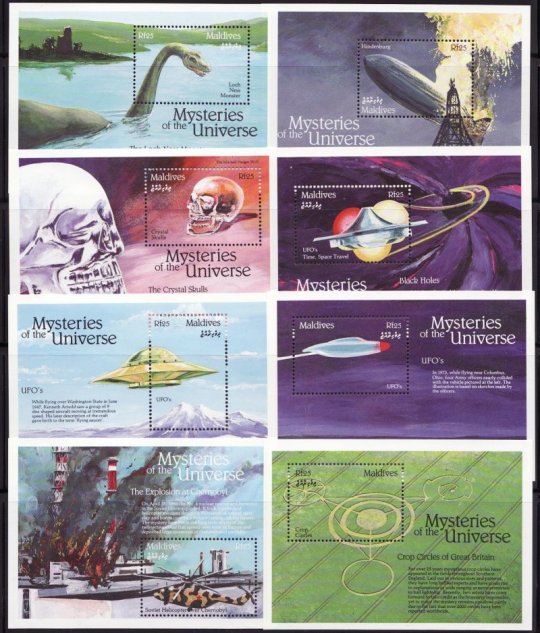
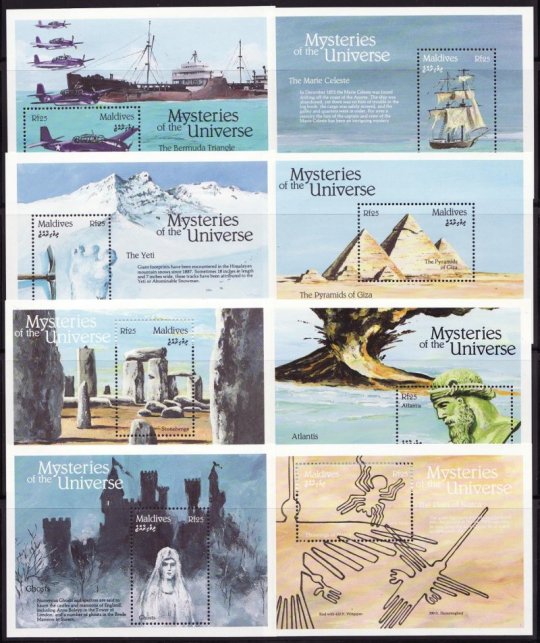
Maldives' Mysteries of the Universe stamps, 1992
#maldives#mysteries of the universe#stamps#1990s#1992#loch ness#ghosts#bermuda triangle#yeti#stonehenge#nazca lines#atlantis#pyramids#marie celeste#crop circles#chernobyl#ufos#crystal skulls#time travel#hindenburg#art bell#coast to coast
6 notes
·
View notes
Text
168 New Nazca Geoglyphs Discovered
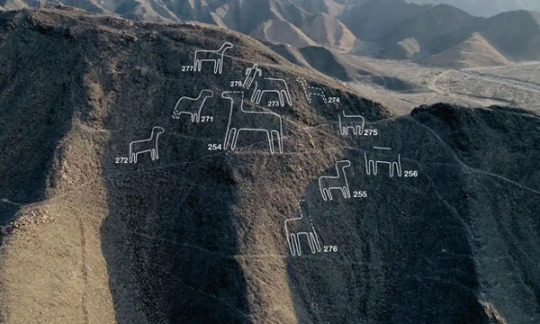
More than 100 new designs discovered in and around Peru's Nazca plain and surrounding areas could bring new information to light about the ancient artworks that have intrigued scientists and visitors for decades. Following two years of field surveys with aerial photos and drones, Peruvian and Japanese researches from Yamagata University reported the discovery of 168 new designs at the Unesco World Heritage site on Peru's southern Pacific coast.
The geoglyphs, huge figures carved into the South American desert, date back more than 2,000 years and depict living creatures, stylized plants and imaginary beings, as well as geometric figures several kilometres long. Jorge Olano, head archaeologist for the Nazca Lines research program, said the newly discovered figures averaged between 2 and 6 meters (6.56 to 19.7ft) in length.
The purpose of the Nazca Lines, which could only be seen from the air, remains a mystery. These new findings, however, are smaller and can be seen from the ground. The figures, iconic vestiges of Peru's rich history, are about a three-hour drive from the capital, Lima. Researchers had already discovered 190 figures in the area since 2004. But the vastness of the terrain they cover has complicated efforts to study and conserve the heritage site.
Yamagata University said the research will be used in artificial intelligence-based surveys to help inform the lines' preservation. Studies from the university in collaboration with Peru's government have helped delineate and protect the area, which is facing threats from urban and economic developments. Some geoglyphs are in danger of being destroyed due to the recent expansion of mining-related workshops in the archaeological park.
Anthropologists, ethnologists, and archaeologists have studied the ancient Nazca culture to try to determine the purpose of the lines and figures. One hypothesis is that the Nazca people created them to be seen by deities in the sky. Another theory is related to astronomy and cosmology, as has been common in monuments of other ancient cultures: the lines were intended to act as a kind of observatory, to point to the places on the distant horizon where the sun and other celestial bodies rose or set at the solstices.
Other theories were that the geometric lines could indicate water flow or irrigation schemes, or be a part of rituals to "summon" water. The spiders, birds, and plants may be fertility symbols. It also has been theorized that the lines could act as an astronomical calendar, as proved by the presence of radial centers aligned along the directions of winter solstice and equinox sunset. Researchers believe that the geoglyphs were the venues of events linked to the agriculture calendar. These also served to strengthen social cohesion among various groups of pilgrims, sharing common ancestors and religious beliefs.
8 notes
·
View notes
Text

#nazca#nazca lines#paracas peru#peruvacation#peru#peruvian#ballestas islands#las ballestas#travel#photography#fuji x100v#fujixseries#fujifilm#fun#boat trip#ocean air#sea life#travel blogger#travel photography#travel vibes#travel photo blog
6 notes
·
View notes
Text

White Stag
#Collage#Art#Mixed Media#Folktember#Folktember2023#White Stag#Psychopomp#mystery#dreams#October Country#Nazca Lines#Art Prompts#ghost#ghostie
18 notes
·
View notes
Text
Art for no one
Inspired by Jacob Geller’s video essay of the same name
XxXxXxX
I cannot imagine a world where I do not play to an audience: I am the tree, fallen, in the forest, my sound echoing in the ears of those who pay witness, or else not echoing at all.
Art, to me, exists in the eye of the beholder, and so what of that art that spits in that eye? Not by way of drawing attention to itself, or to make a statement, but to hide itself away. This is no hidden grotto, meant only to be shared with those precious to the artist, but instead meant to be hidden entirely. An artist who creates for nobody is not indifferent to an audience, they will instead hoard and hide away their work, and for the life of me I cannot understand it.
The idea alone is maddening, it astounds and confounds me. I try and I try to understand, but all of me, everything I am, is so completely foreign to the idea. This is not something beautiful hidden away to be found later by an unassuming stranger, delighted at what they find, no, this is to be hidden away and rot, crumble into dust.
Art is a message, to me, from the artist to audience, but why must you insist on a complete lack of one? What is your message, and whose ear is it you whisper into? God? Yourself? Nature? What do you know that I don’t, how can you create and not wish to share your thoughts, your process, the finished work?
Did it bring you shame, that wonderful work I can only describe as a masterpiece? You spend half your life, you painted it upon the walls of your house, you’ll never feel the same way again and you must look at that paint constantly. You, who carved lines into stone, perfect curves and parallels, seen only by those who watch up above, long before your decendents touched the sky, who were you carving for?
Self motivation is all well and good, but even an artist most removed from their work will still showcase it, and even if that work was mere practice, surely it wouldn’t be hidden away? Do you feel our presence; our analyses and critiques; our thoughts and our actions; might ruin your piece? Do you feel that to allow your work to be perceived is to taint it, to somehow usher in imperfection? Is it a matter of pride? Of hubris? Of shame? I only wish to understand, but is that the very reason you keep it from me?
#just watch the video essay#you’ll get it#crowfeatherquill#art for no one#jacob geller#francisco goya#city#michael heizer#nazca lines
5 notes
·
View notes
Text



by jellosquash
16 notes
·
View notes


